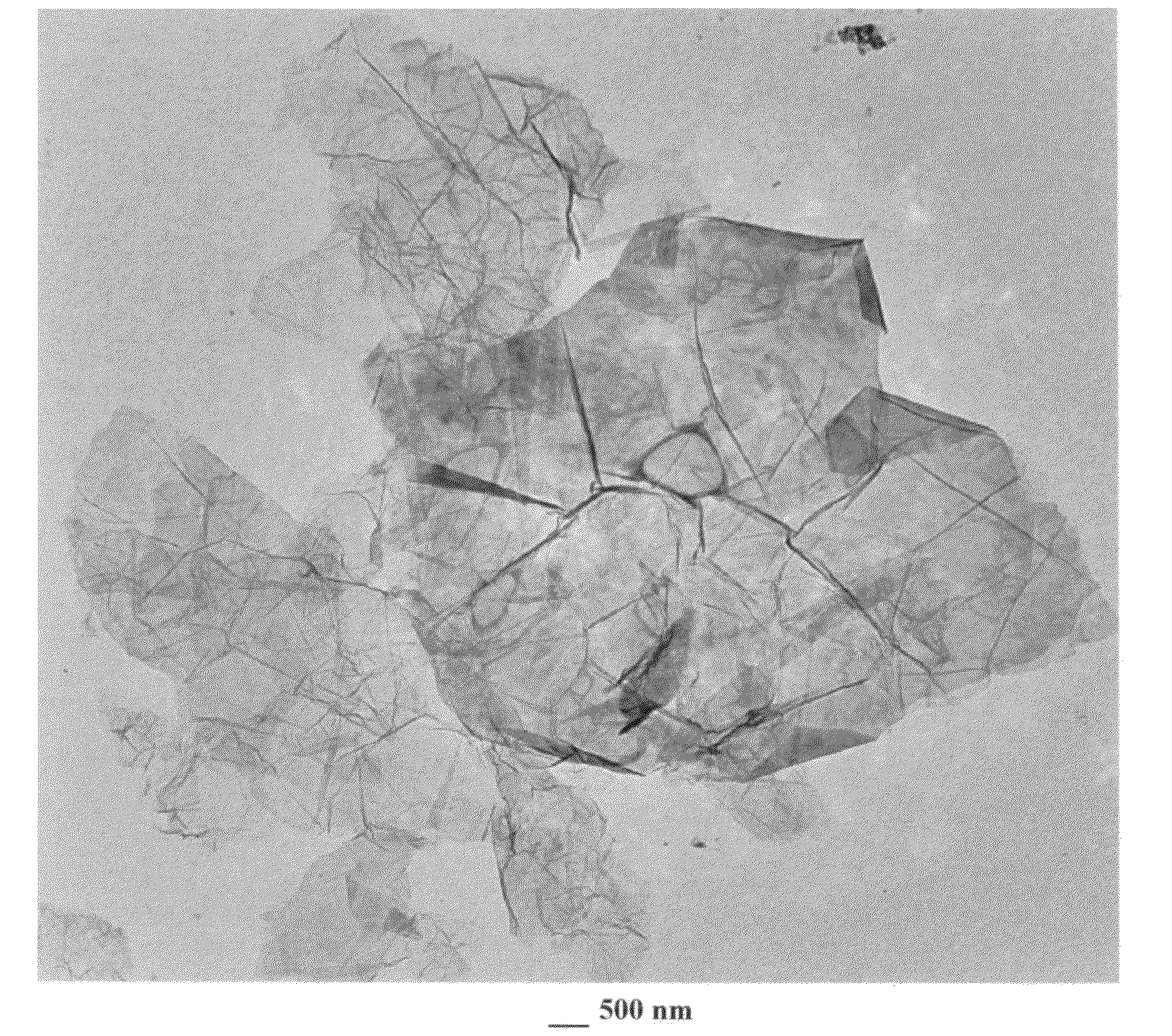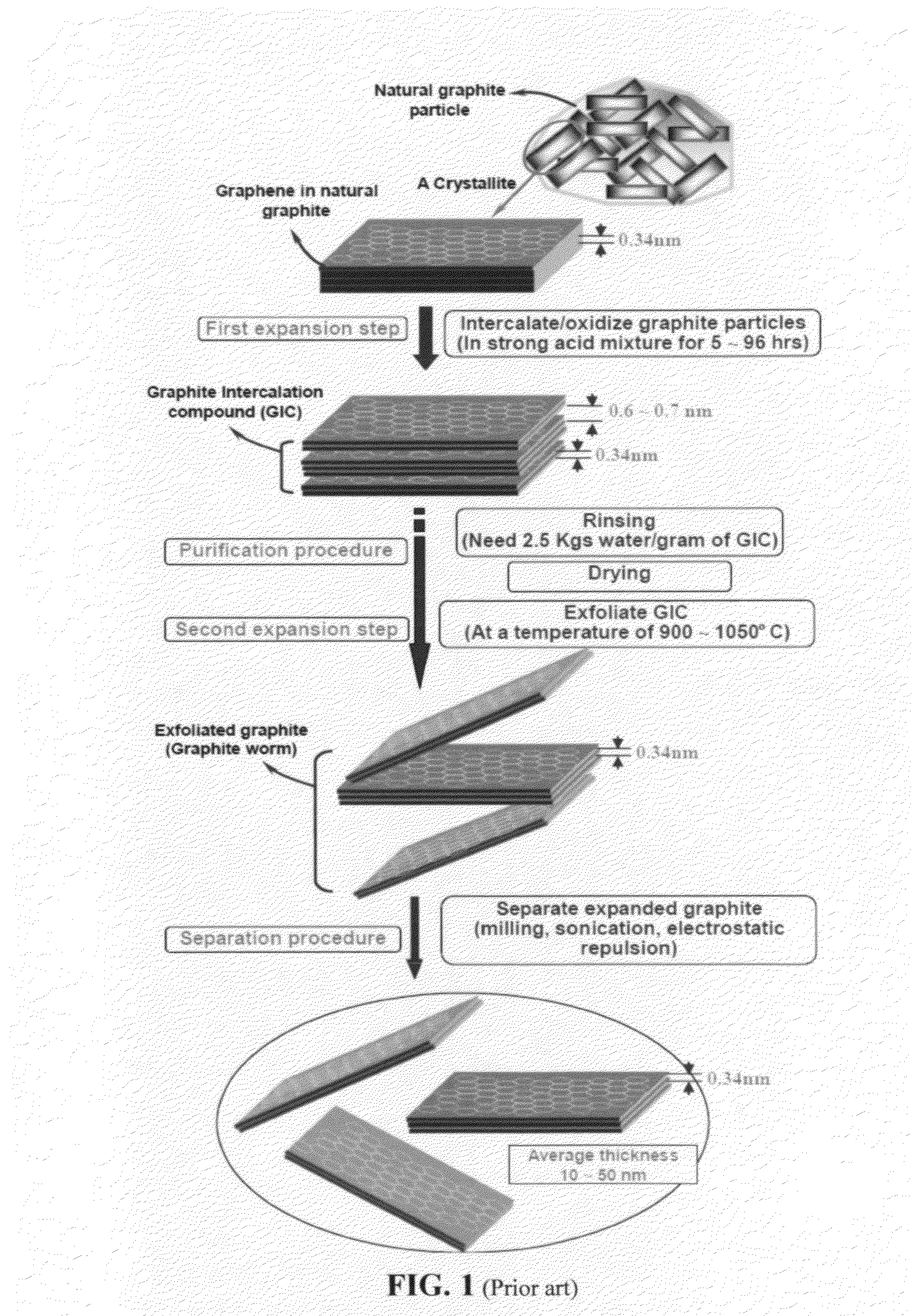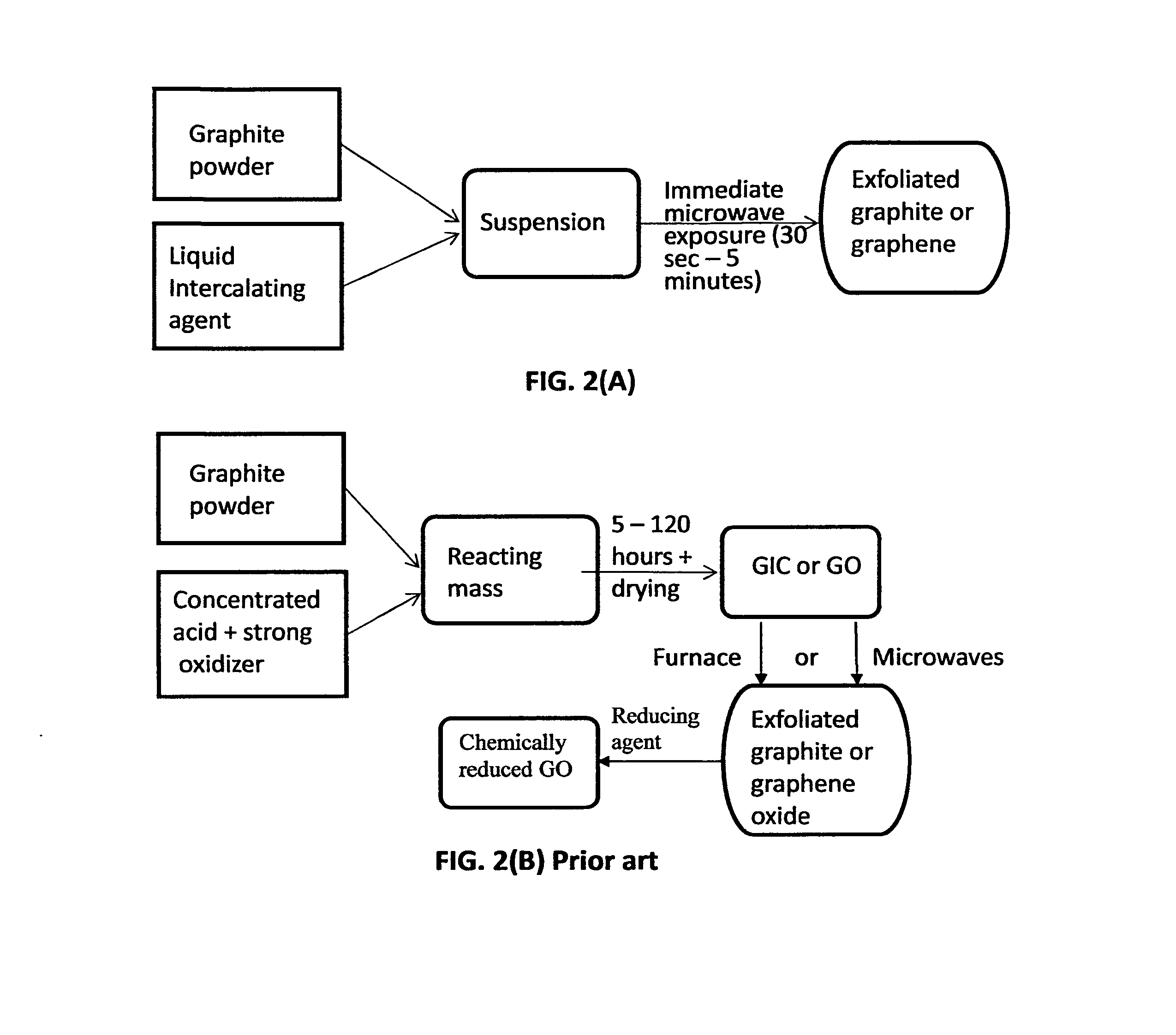One-step production of graphene materials
- Summary
- Abstract
- Description
- Claims
- Application Information
AI Technical Summary
Benefits of technology
Problems solved by technology
Method used
Image
Examples
example 1
Nano Graphene Platelets (NGPs) from Artificial Graphite
[0054]Twenty (20) mg of meso-phase pitch-derived graphite of approximately 20 μm in size were used in each of the following samples:[0055]Sample 1A: graphite was added to a mixture of 20 mL of formic acid and 1 mL of hydrogen peroxide and the resulting suspension was subjected to direct microwave irradiation for 3 minutes. Electron microscopic examinations of selected samples indicate that the majority of the resulting NGPs contain between single graphene sheet and five sheets.[0056]Sample 1B: graphite was immersed in a mixture of 2 mL of formic acid and 1 mL of hydrogen peroxide at 45° C. for 24 hours. Following the chemical oxidation / intercalation treatment, the resulting intercalated flakes were washed with water and dried. The resulting product is a formic acid-intercalated graphite compound. The dried GIC was then placed in a microwave oven and irradiated for 3 minutes. The thickness of the resulting platelets ranges from 1...
example 2
Direct Exfoliation of Artificial Graphite in the Presence of Sulfuric Acid and / or Nitric Acid
[0058]Twenty mg of artificial graphite as used in Example 1 were used for each of the following samples:[0059]Sample 2A: Graphite was dispersed in a mixture of reagent-grade, highly concentrated sulfuric acid and nitric acid (oxidizer) at a weight ratio of 4:1 (graphite-to-intercalate ratio of 1:3) and the resulting suspension was directly (immediately) submitted to microwave irradiation for 2 minutes.[0060]Sample 2B: Graphite was dispersed in a mixture of diluted sulfuric acid (50% in water) and diluted nitric acid (50% in water) at a weight ratio of 4:1 (graphite-to-intercalate ratio of 1:3) and the resulting suspension was directly submitted to microwave irradiation for 2 minutes.[0061]Sample 2C: Graphite was dispersed in a reaction-grade sulfuric acid (graphite-to-intercalate ratio of 1:3) and the resulting suspension was directly submitted to microwave irradiation for 2 minutes.[0062]Sa...
example 3
NGPs from Direct Microwave Irradiation of Natural Graphite in the Presence of a Mixture of Acetic Acid and Hydrogen Peroxide (Oxidizer), or Oxalic Acid and Hydrogen Peroxide
[0067]Two grams of natural flake graphite having a particle size of 50 mesh were dispersed in two intercalating mixtures: acetic acid and hydrogen peroxide (oxidizer) and oxalic acid (an example of carboxylic acid) and hydrogen peroxide. Each suspension was then subjected to direct microwave irradiation to obtain exfoliated graphite and isolated graphene sheets. Both produce large graphene sheets (20-30 μm) that are very thin (1-7 layers). The chemicals used are all environmentally benign.
PUM
 Login to View More
Login to View More Abstract
Description
Claims
Application Information
 Login to View More
Login to View More - R&D
- Intellectual Property
- Life Sciences
- Materials
- Tech Scout
- Unparalleled Data Quality
- Higher Quality Content
- 60% Fewer Hallucinations
Browse by: Latest US Patents, China's latest patents, Technical Efficacy Thesaurus, Application Domain, Technology Topic, Popular Technical Reports.
© 2025 PatSnap. All rights reserved.Legal|Privacy policy|Modern Slavery Act Transparency Statement|Sitemap|About US| Contact US: help@patsnap.com



